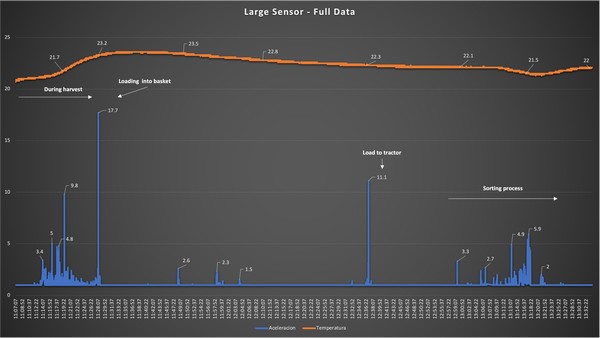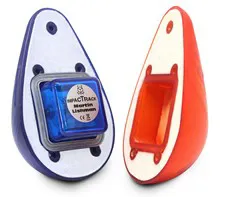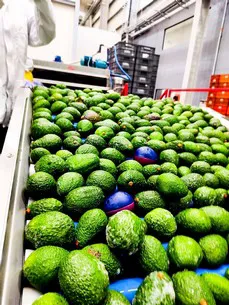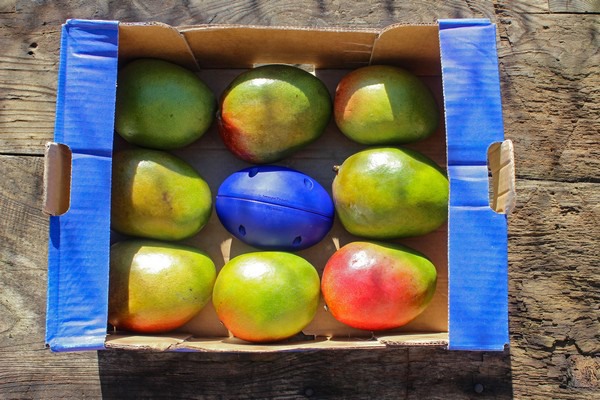Food waste is an emotive subject and if the product is not in tip top condition when it reaches the supermarket shelves it will most likely end up in the bin. Damage to fresh produce can occur at various points in the chain from field to packhouse, packhouse to container, container to supermarket shelf. If damage could be reduced at the very beginning of the chain then surely food waste would be reduced at the end.

While fruit is being sorted and packed it can be subject to damage on the packing line due to less than optimal conditions or simply a machine running too fast or even human error.
 Four years ago Martin Lishman Ltd brought a shock sensing PCB detector to the market, this device is encased in a synthetic 3D-printed shell to replicate the shape, size and density of the fruit or vegetable being processed. The ImpacTrack gives real-time data via Bluetooth to a smart device to detect exactly where in the line the impact is taking place.
Four years ago Martin Lishman Ltd brought a shock sensing PCB detector to the market, this device is encased in a synthetic 3D-printed shell to replicate the shape, size and density of the fruit or vegetable being processed. The ImpacTrack gives real-time data via Bluetooth to a smart device to detect exactly where in the line the impact is taking place.
“You can watch the shape going through the line and immediately identify the trouble spots,” explained Dr Gavin Lishman, Director at Martin Lishman. “You can run the ImpacTrack through the line a few times to see where the problems are or if there is a lot of damage occurring you can immediately stop the machine and fix the problem.”

Martin Lishman has worked with many prominent companies to practically eliminate impact damage on the processing lines. The device can also be used during transportation and the impact data as well as temperature data can be downloaded at the end of the journey.
 “We have worked hard to replicate different fruit and vegetables in size, shape and density. We have sensors for potatoes, onions, garlic, avocados and apples and for some of these a few variations as size and density can vary between varieties or grades. We have also developed a banana sensor. There really is no limit to what we can do.
“We have worked hard to replicate different fruit and vegetables in size, shape and density. We have sensors for potatoes, onions, garlic, avocados and apples and for some of these a few variations as size and density can vary between varieties or grades. We have also developed a banana sensor. There really is no limit to what we can do.
“It is a unique device, there nothing else like it on the market for eliminating waste. Some packers are of the opinion that the sensor only needs to be run once, but we believe it should be run multiple times as machines get adjusted, speeds and throughput volumes change.“

The device can also show what the optimum operating speed of a line is. Machine manufacturers could also use it as a selling point to improve efficiency.
For more information:
Dr Gavin Lishman
Martin Lishman Ltd.
Tel: +44 (0)1778 426600
gavin@martinlishman.com
martinlishman.com
